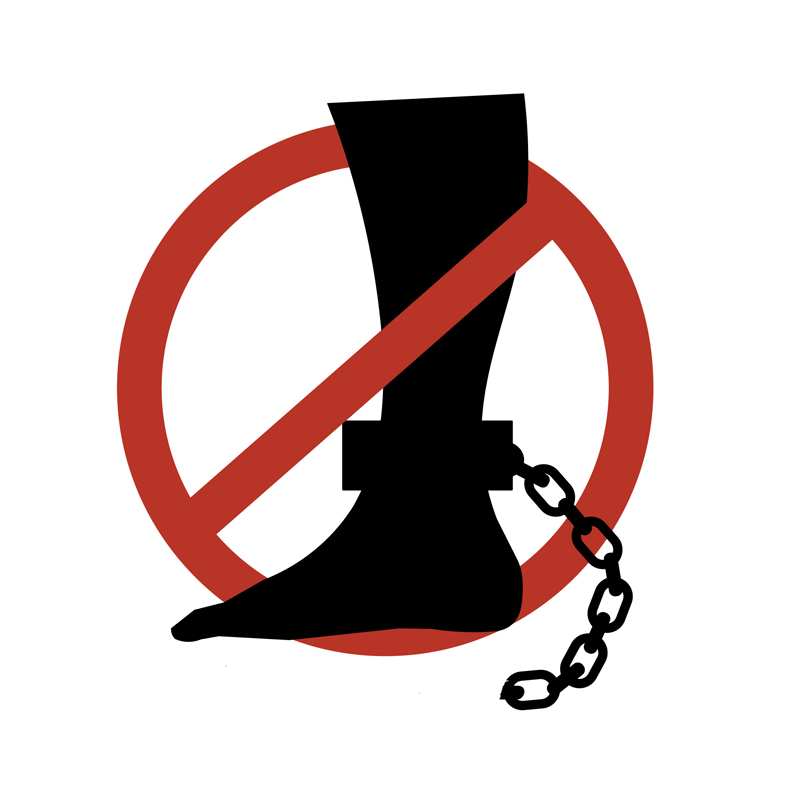

Kieran Guilbert -
The world’s top economies have ramped up spending on the fight to eradicate modern-day slavery, according to new United Nations figures, but campaigners said businesses needed to play a greater role by ensuring their supply chains are slave-free.
Upcoming UN data showed overseas aid spending on anti-slavery initiatives by the 35-member OECD (the Organization for Economic Cooperation and Development) surpassed $400 million in 2013.
Previous research published in the journal Anti-Trafficking Review found that a dozen leading OECD nations had spent an average of $124 million per year over the previous decade.
With slavery increasingly regarded as a major global issue, there is growing scrutiny on how much is being spent to meet a UN goal to end by 2030 a trade estimated to enslave about 40 million people and raise annual illegal profits of $150 billion.
But experts said scarce data, limited coordination between governments, and varying views on what constitutes modern slavery and how to end the crime mean it is hard to measure the impact of anti-slavery funding and argue for targeted spending.
“We don’t know if there is too much spending in any given direction in the anti-slavery sphere as we don’t have a handle on the outcomes,” said James Cockayne, a head of office at the UN University (UNU) which compiled the new data on funding.
While government and philanthropic funding is valuable, companies hold the key to driving long-term change — by cleaning up their supply chains — said Nick Grono, head of the Freedom Fund, the first private donor fund dedicated to ending slavery.
From clothes and cosmetics to smartphones, major brands are under rising pressure from consumers to disclose what they are doing to ensure products are free of forced or child labour.
“The biggest impact won’t come from funding, but from firms investing resources to transform their supply chains, be more transparent and change their procurement practices,” Grono said.
DATA DEFICIENCY
One of the main debates around anti-slavery funding involves the merits of financing on-the-ground projects, such as support for survivors and vulnerable populations, compared with investing in advocacy and awareness raising to achieve change.
“You cannot focus only on direct services yet fail to address other critical forces and trends,” said Ed Marcum, managing director of US-based foundation Humanity United (HU).
“Otherwise you are just rearranging the deck chairs on the Titanic,” added Marcum, describing how investigations into labour abuses in Thailand’s seafood industry sparked change.
The multi-billion dollar sector, where many migrants work, has come under intense scrutiny and faced global pressure to reform in recent years after investigations found slavery and trafficking on fishing boats and in processing facilities.
More money must be spent on evaluating the impact and value of anti-slavery efforts as the world lacks oversight and monitoring of such funding, according to Martina Ucnikova, a human rights consultant who has analysed spending in this field.
Frustrations around data extend to the first joint effort by two key anti-slavery groups — the UN’s International Labour Organization (ILO) and the Walk Free Foundation — to count the number of victims worldwide which was published last September.
About 40 million people were slaves in 2016 — mostly women and girls — according to the estimate, which was criticised for gaps such as a lack of data from conflict-hit nations, and the fact it cannot track progress in the anti-slavery drive.
Superior data will be required to enable the global anti-slavery movement to attract serious funding, according to Siddharth Kara, a US academic and author on modern slavery.
“All the money accrued to date is just a drop in the bucket compared with the next level of resources that is required.”
“NOT EASY, NOT CHEAP”
Philanthropic funding is also on the rise, with almost $100 million given to anti-slavery initiatives in 2014 — up from $63 million in 2012 — shows the latest data from the Freedom Fund.
While more funders are entering the field, joining the likes of HU, Walk Free and Ford Foundation, activists say The Global Fund to End Modern Slavery (GFEMS) could prove a “game-changer”.
Launched in 2015, the public-private partnership seeks to raise $1.5 billion to halve the number of slaves in the hardest-hit countries by uniting governments, businesses and charities.
As slavery is not considered a priority for donors compared with issues such as HIV, education and conflict, engaging the private sector is an urgent need, said Ben Skinner, founder of Transparentem, an intelligence unit that analyses supply chains.
“There is a perception of a financial battle against $150 billion (annual profits for traffickers) but this figure does not represent an organised or strategic group,” he said.
“If (anti-slavery) funding is spent smartly, a victory against modern slavery based on asymmetric warfare is possible.”
Long-term market-driven solutions to end modern slavery must encourage firms to take action while enabling them to stay competitive, according to Jean Baderschneider, head of GFEMS.
“Mobilising $70 trillion of procurement spend could be key to sustainably ending modern slavery,” said Baderschneider, who was formerly a senior executive at US oil giant ExxonMobil.
While many businesses back anti-slavery efforts — from Google funding US and UK-based helplines to Walmart investing in research into the Thai seafood industry — real change will come only when firms reform their supply chains, experts say.
“Companies have a huge role to play in this way,” said Grono of the Freedom Fund. “But it’s not easy and it’s not cheap.” — Reuters
Oman Observer is now on the WhatsApp channel. Click here



